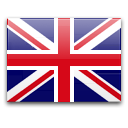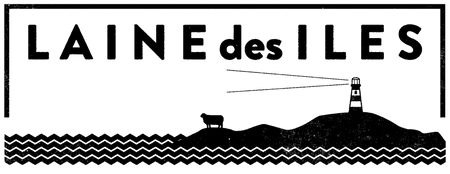The Origins
The story starts in the Neolithic Age, when early farmers brought the first sheep to Europe. These sheep are thought to have been short-tailed sheep, and their descendants were carried all over northern Europe and beyond by waves of settlers from Norway, Scotland and Ireland. They are hardy sheep, well-adapted to harsh environments, but they are small and were later replaced in many areas by larger sheep from southern Europe which would produce more meat. By the 19th century they remained only in remote areas, particularly the islands of Northern Scotland and Scandinavia, the Faroe Islands, Iceland and also in France on the island of Ouessant in Brittany.
Due to their harsh climates and difficult terrain, many of these remote islands were unable to support other kinds of livestock, so the sheep was all-important. The Faroe Islands are even named after sheep – the word Faroe derives from an old Norse word meaning sheep, so they are literally the sheep islands. The sheep provided meat but also of course wool. It is therefore no surprise that wool and knitting should have become such an important feature of life in these communities.
Scandinavia
We know therefore that the small sheep that we associate with so many of the lands of Northern Europe were spread across the region mainly by Norse settlers. For many of us, knitting is synonymous with Scandinavia, and we might therefore suppose that it was the Norsemen who also introduced knitting to the regions that they settled in. However this is not the case. The Norsemen did use a technique called Nålbinding, and examples of garments made in this way have been found in the lands where they settled. The finished fabric looks very similar to knitted fabric, but it is a very different technique using one needle only.
There are many theories about exactly where and when knitting was invented, but it is thought that it originated in the Middle East and spread to Europe through Spain and Italy via traders and crusaders. From there it spread northwards, and in fact Scandinavia was one of the last areas that it reached, with the earliest examples of knitted fabric dating from 16th century. However in the 19th century, a knitting revolution took place across Scandinavia. Folk costumes began to contain distinct regional patterns, with each community developing its own local traditions to differentiate their costumes from their neighbours’. A huge variety of patterns and variations was developed, and it is for this reason that Scandinavian knitting remains such a vast source of inspiration for knitters today.
The British Isles
Of all the islands, those that have undoubtedly the richest tradition in wool and knitting are the British Isles. Wool is part of Britain’s history and heritage, more than any other commodity it has ever produced. The weaving of wool cloth in Britain began in the Bronze Age, and by the time the Romans arrived in 55BC the wool industry was already established. Roman emperors prized British woollen cloth “so fine it was comparable to a spider’s web”. The wool trade was the backbone of the English economy during the Middle Ages, with merchants from all over Europe paying high prices for English wool. Further waves of settlers from Flanders and the French Huguenots also brought their skills, and by the end of the 17th century wool made up two thirds of English exports. The profits to be made did not go unnoticed in other parts of Britain, and by the 18th and 19th centuries, sheep farming was also firmly established in Scotland, Wales and Ireland. It could even be said that wool and the weaving of wool cloth formed the original basis of the British industrial revolution. The result of this dependence on wool was a huge variety of sheep breeds. Today there are over 60 breeds of sheep in Great Britain, more than in any other country in the world, and sheep farming remains an important part of British agriculture.
The Falklands
For the most part, the yarns you will find here are produced entirely in Europe from European sheep breeds. However I have made one important exception, and that is the Falkland Islands. As a British territory, sheep farming on the Falkland Islands is part of the British tradition, and the yarn produced by the Falklands merino is of exceptional quality. The islands have a similar climate and terrain to their northern Atlantic counterparts, and sheep have been farmed here for over 150 years. Today, in an area the size of Northern Ireland, the islands are home to around 2800 people and almost 500,000 sheep. Due to their remoteness and cool climate, the islands provide a pristine environment for livestock with no parasites or pests. The sheep therefore enjoy exceptionally high standards of welfare, with no flystrike problems, no external pesticides and are free from mulesing.


